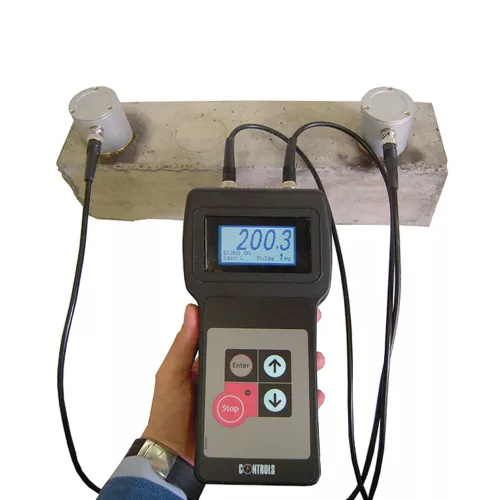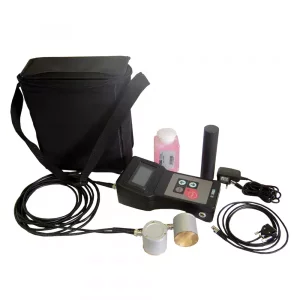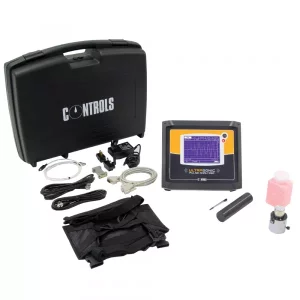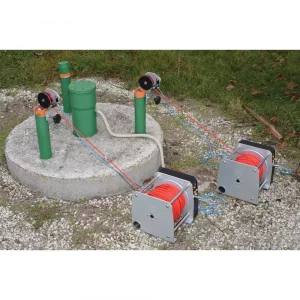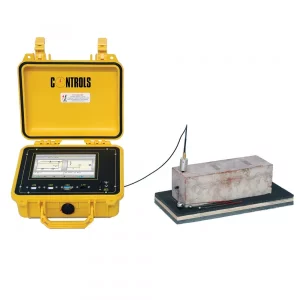IntroductionThe 58-E4800 UPV tester is used for quality control and inspection of concrete. It measures the transit time of ultrasonic pulses through concrete for inspection of new and old structures, slabs, columns, walls, fire damaged areas, precast and prestressed beams, cylinders and other concrete forms.
Combined with an oscilloscope can identify honey combs, voids, cracks and other non homogeneous conditions in concrete.
DescriptionHand held light instrument, battery operated, microprocessor incorporated, supplied complete with two 54 kHz transducers (transmitter and receiver), calibration rod, 250 mm of coupling agent, instruction manual and carrying case. The meter can also be used with low and high frequency transducers. See accessories.
NoteAnother advanced model of UPV tester is also available. See
Ultrasonic pulse analyserPULSONIC model 58-E4900 with incorporated oscilloscope, suitable for determining the Dynamic Modulus of elasticity, the measurement of the Attenuation of the transmitted energy, the Spectrum analysis by FFT method, the Concrete strength evaluation combining the pulse velocity with the Rebound number of the concrete hammer (SonReb method), etc.
